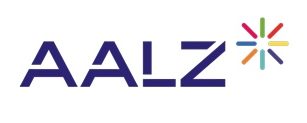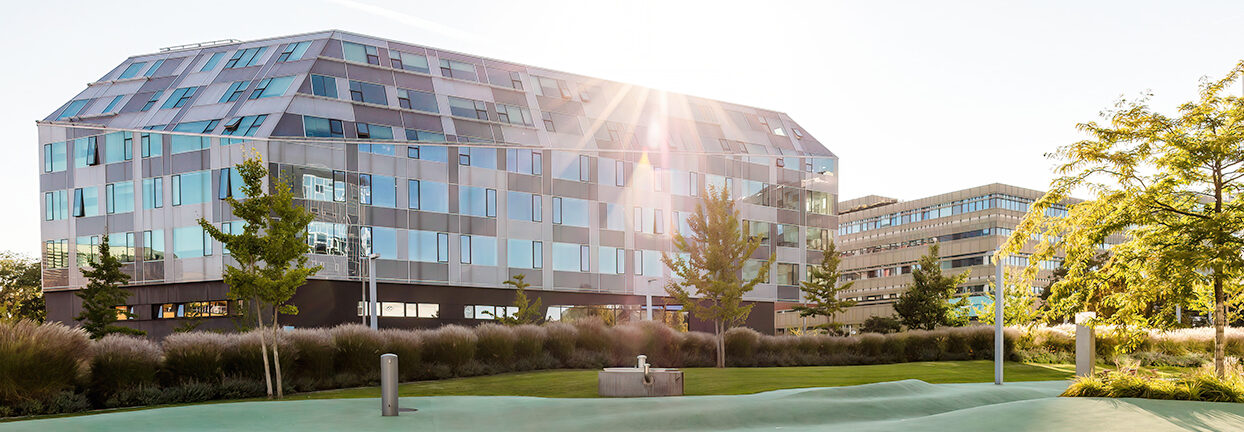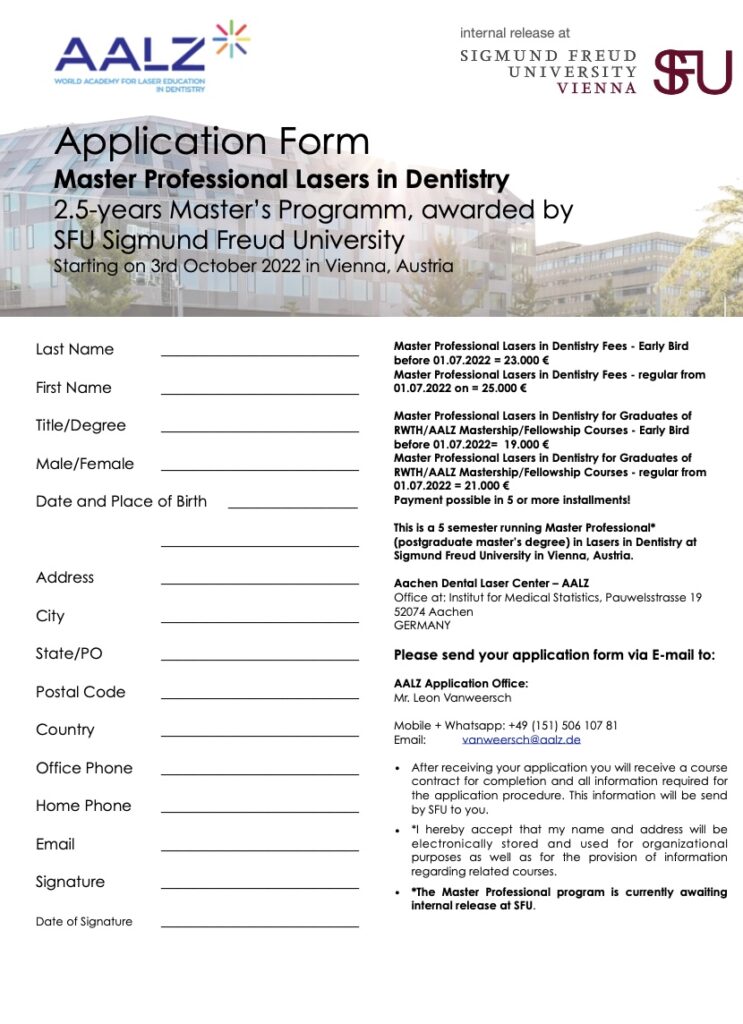
Qualification goals of the program
The Master’s program in Lasers in Dentistry is an application-oriented continuing education program, whereby great importance is also attached to the teaching of scientific fundamentals.
The program offers dentists the opportunity to specialize in the field of laser dentistry. It promotes analytical, constructive and creative problem-solving skills in practice on the basis of a reasonably broad technical knowledge that is deepened in selected areas.
The main objectives of the program are to provide participants with scientific skills and to enable them to take up a qualified position in the dental community. Qualifications that students acquire in the course of their studies are in particular:
- An understanding of the different optical models for the classification of light
- Knowledge of the physical principles as well as the technical implementation of a laser system
- Knowledge of dental principles in the application of laser systems with specific wavelengths
- Competent and professional patient counseling in all areas of lasers and laser-assisted therapies
- Critical evaluation ability of scientific knowledge in the field of dentistry
- The ability to use dental laser systems in a clinically correct manner:
- The safe and ethical use of lasers
- The clinically indicated use of lasers, taking into account the indications and contra-indications for the given wavelengths.
- The supportive or independent role of lasers in therapy
- Recognized therapy plans and treatment protocols
With the supervision by qualified scientific staff, students are introduced to the successful and professional application of lasers in their practice. The degree enables an innovative step in the interdisciplinary linking of life science, medicine and natural sciences. The interdisciplinary cooperation also offers the possibility of linking research and teaching between the fields of dentistry and physics at the highest level of quality.
In order to achieve the qualification profile presented, the individual module objectives have been coordinated in terms of content so that they contribute in their sum to the overall objective and the knowledge, skills and abilities to be acquired. It is taken into account that for each module individual learning objectives are derived from the overall qualification objectives and formulated accordingly.
Supra-disciplinary skills, such as being able to constructively reflect on one’s own learning behavior, as well as the ability to work in a team or communication and cooperation skills, are also taught through the didactic teaching and examination methods anchored in each module. Thus, it is envisaged that numerous modules will contain specific practice units via skill training or practice-oriented case studies, which will be developed, presented and discussed either individually or in teamwork.
The goal is to further educate dentists who wish to excel in both technological competence and innovative treatment skills.
Since there are hardly any comparable study programs nationally and internationally, the SFU takes a pioneering position with this specialized master’s degree in the field of further education and comes closer to its own set goals of more internationalization. Another unique feature of the program is its international orientation as an English-language master’s program in the German-speaking world.
Rationale for the establishment of the program
The “Lasers in Dentistry” program is aimed at practicing dentists. One of the objectives is to impart knowledge and functionalities of laser systems for the treatment of dental diseases. There is a considerable demand in dental practice for the use of lasers as a modern diagnostic and therapeutic instrument. The theoretical basics of the laser and the practical use of the laser are the subject of the study program.
It should be noted that nationally (Austria, Switzerland, Germany) no comparable master program is available, although more than 4,000 dental practices have a laser. The study program with the educational goal of laser application in dentistry is to be offered in English in Vienna, opening it for an international audience.
General
The study program is divided into 19 modules, which are evaluated with 1 to 30 ECTS points. A total of 120 ECTS are awarded, each of which is calculated with a time expenditure of 25 working hours. This results in a total workload of approximately 3,000 working hours (student workload) including the final examination in 5 semesters total.
The contact time at the teaching locations amounts to approximately 60 days during the entire course of study. The theoretical course days as well as the practical course days take place at the SFU in Vienna in block teaching. The attendance phases of several modules are combined into one teaching block, also in order to keep the travel costs of the participants as low as possible.
In addition, there will be an excursion week to Misr International University (MIU) in Cairo (Egypt). The parts of the study that are not done during the contact time are represented in self-study phases and patient treatment, preparation of modules, as well as in-depth online seminars and lectures. In addition, a master thesis is written in the last 2 semesters.
Goals of the study program
The goal of the Master’s program “Lasers in Dentistry” is the application-oriented academic continuing education of dentists in the field of laser dentistry. Overall, the professionalism of the participants should be increased both in terms of current scientific standards and practical activity in the field of laser dentistry. The participants will be prepared in the field of laser dentistry for practice and/or a scientific activity in teaching or research and the achievement of this goal is realized by a more practice-oriented course of studies. The study program is characterized by its practical orientation as well as by its application-oriented research.
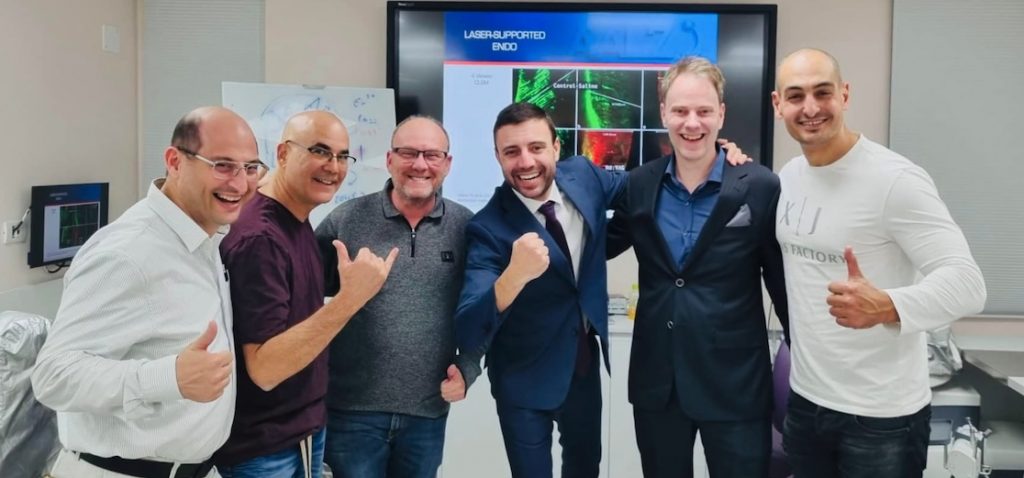
Admission criteria
Prerequisites for admission to the master’s program in laser dentistry at Sigmund Freud Private University in Vienna are:
- a recognized first university degree in dentistry, which proves the professional background for the master’s program. Recognized degrees are those which have been approved by a competent state authority of the state in which the university is located or which have been accredited in a state-recognized procedure.
- In order to qualify for the professional qualifications referred to in paragraph 1, the applicant must have the knowledge required for successful study in the Master’s degree program in Lasers in Dentistry in the areas listed below:
- The license to practice as a dentist, which proves the previous professional training for the master’s program, or an equivalent qualification for foreign applicants.
- Proof of two years of dental work in a clinic or practice.
- The Examination Committee may make admission subject to the condition that certain knowledge must be demonstrated by the time the Master’s thesis is registered. The type and scope of these requirements are determined individually by the examination committee on the basis of the study content completed as part of the previous degree. This is done in consultation with the study coordinator or the subject study advisor.
- Applicants who have not acquired their study qualification at an exclusively English-speaking institution or who have learned English as their native language must provide proof of sufficient command of the English language for the study program. The following certificates are accepted:
- Test of English as Foreign Language (TOEFL) “Internet-based” Test (iBT) with a score of at least 80 points or
- TOEFL “Paper-based” Test (PBT) with a score of at least 550 points or
- IELTS test with a score of at least 6.0
- Cambridge Test – Certificate in Advanced English (CAE)
- An interview with the examining board in English to test English language skills
- The examination board shall determine whether the admission requirements have been met in consultation with the Registrar’s Office, in the case of foreign applicants in consultation with the responsible bodies.
Schedule and locations
The courses take place in block teaching. Approx. 55 course days take place in Vienna and approx. 5 course days in Cairo.
For better planning, the schedule for the following semester will be planned in advance with the lecturers and taking into account the organizational framework conditions for the entire period of the study year.
The course times in the block instruction of the modules are regularly daily from 9:00 o’clock to approx. 17:00 o’clock (or 9 am to 5 pm).
Goals of the study program and overview of the modules
On the basis of in-depth knowledge, the study objectives focus on imparting specialist knowledge that is oriented towards current research issues in laser dentistry. Treatment methods, planning of treatments, critical classification of scientific and clinical findings, as well as independent responsible action are of central importance.
The overall study objectives of the Master’s program “Lasers in Dentistry” include
- the understanding of different optical models for the description of light
- understanding the physical principles and technical realization of a laser system
- understanding the dental fundamentals of the application of a laser system of a specific laser wavelength
- the ability to use a dental laser system in a clinically correct manner on the patient, with particular emphasis on
- the safe use of a laser
- the ethical use of a laser
- the clinically indicated use of a laser with special consideration of indications and contraindications of the respective laser wavelengths
- the supportive or independent character of the laser in therapy
- a recognized therapy plan and treatment protocol
- Competent and professional consultation of patients in all questions of laser-assisted therapy and laser therapy
- Critical classification of scientific and clinical findings in the field of laser dentistry
The curriculum of the study program (see Figure 1) follows a practice-oriented approach.
The first modules introduce participants to the modules of dental diode lasers and erbium lasers, such as Er:YAG and Er,Cr:YSGG lasers, including the lecture on laser safety according to EN/IEC60825.1:2014, or OStrV, which provides participants with the skills of a laser safety officer.
Other modules cover optics, laser physics as well as detailed medical knowledge in the field of dosimetry and the use and functioning of fluorescence-based devices for caries diagnostics. In addition, computer-assisted literature research is presented for early qualification and support in the master’s thesis. This is rounded off by a module on scientifically correct behavior.
Further modules present one laser wavelength, and their clinical indications according to the following scheme:
- Module Low-Level Laser Therapy Systems (PBMT), low-power diode lasers
- Module Nd:YAG Laser
- Module CO2 Laser
Each of these clinical modules is supported by intensive skills training (hands-on training) in which participants practice the practical use of the equipment. Each of these modules contains the physical lecture content specific to the laser equipment in question.
The module “Symposium & Marketing” has a special position in the curriculum, as it contains a marketing lecture as well as a colloquium, in which the students, who are now about to graduate from the program, present the topic of their master’s thesis in a short lecture, as well as concluding discussions on the status of the clinical case documentation to be carried out.
A highlight of the study program is the one-week excursion module to the partner university Misr International University (MIU) in Cairo, Egypt. Here, participants gain practical experience and learn how to treat patients with various laser systems. Here, students can carry out patient treatment under expert supervision, provided they do not yet operate laser equipment in their own practice.
The last module is the master thesis, which concludes the program with a successful disputation.
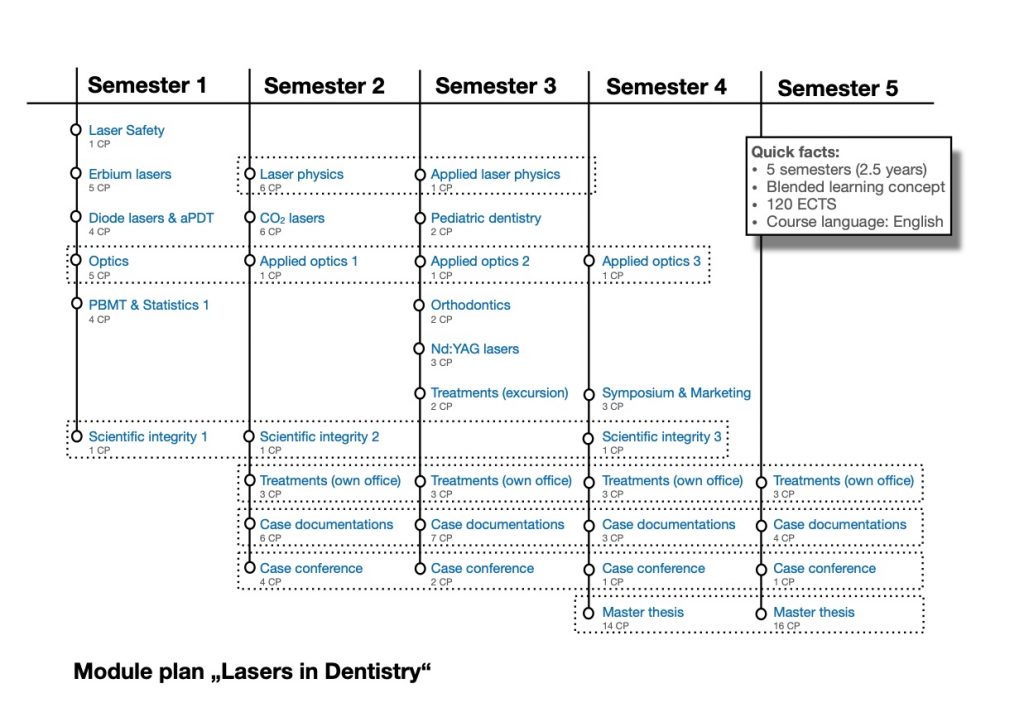
Teaching
By imparting knowledge in attendance phases at the Vienna location, participants can be taken out of their everyday working environment. This gives them an insight into the practical application areas and research fields of the SFU.
Each of the modules of the program includes intensive self-study components as pre- and post-processing of the attendance phases. By preparing for the module, students are expected to achieve a level of knowledge that will allow them to attend a specific attendance phase. In the weeks following the module, participants should be able to communicate and apply the approaches they have developed in their professional practice.
For the self-study phases, participants will be provided with module-specific learning materials in each case. In addition, participation in subject-related discussions and exercises is ensured via access to the course’s own online learning platform and the e-learning system.
Different methods of teaching are used within the framework of blended learning. These are:
- Lectures (face-to-face), frontal teaching
- Lectures (online), usually for in-depth study, or for events of short duration
- E-learning, self-study in the online system
- E-learning, joint learning, asynchronous communication with students and lecturers
- Seminars with practical exercises (computer lab, or students’ own laptops)
- Seminars with practical exercises (laser room), hand-on skill training
- Chair-side teaching: demonstration of treatment methods directly on patients

Organization of the attendance phases
Knowledge transfer and competence building are carried out with the blended learning concept of the study program, which combines digital teaching and learning elements and classical presence elements in the best possible way. This is made possible by the conceptual integration of the various module formats such as online and block presence modules.
The teaching methods used in the modules are, on the one hand, lectures, in the context of which a learning dialog is to result from the development of questions and direct answers.
The theoretical modules consist of a preparation phase, an attendance phase, a follow-up phase (self-study phase) and an examination. The figure below shows an example of the structure of a module.
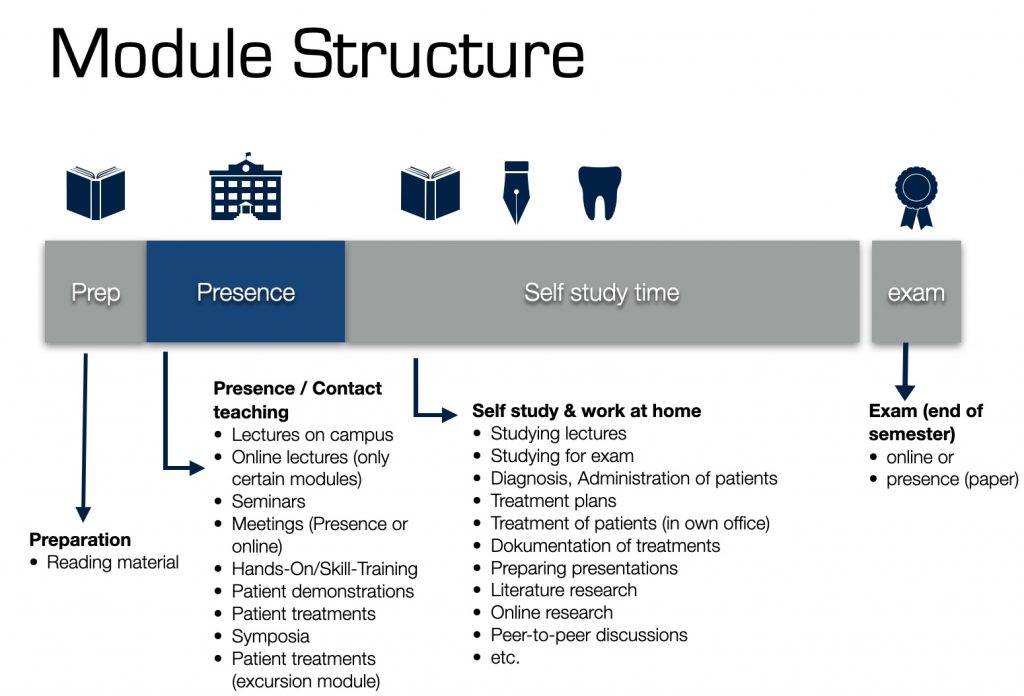
Since the majority of participants travel internationally, the attendance phases of individual modules are sensibly combined. This means that the attendance phases of the modules are bundled into attendance blocks (abbreviated as “block”); the preparation phase and the post-study phase (“self-study phase”) thus take place before the arrival in Vienna and after the departure, respectively.
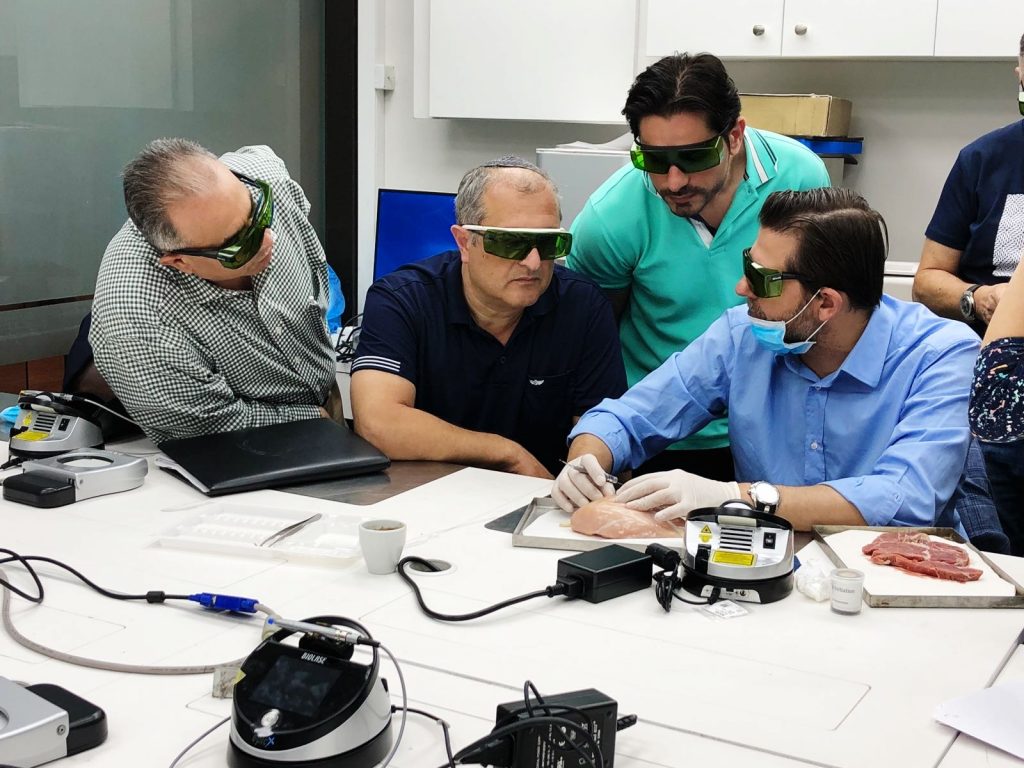
Short description of all modules
Module “Laser Safety”
Participants are familiarized with the foundation of laser safety at the beginning of the course. The principles of laser-tissue interactions, biological effects of radiation, possible eye damage and the protective measures to be taken are covered.
Module “Diode lasers”
The participants learn the technical-physical background of the different diode lasers (wavelengths 445, 650, 810, 940, 970/980 nm). Furthermore, they learn how to handle this class of devices. In the second part of the module, the interaction of the laser radiation of these powerful diode lasers with biological tissue is explained. All relevant clinical indications of diode lasers are presented and the application is demonstrated. Students will watch and learn clinical treatments using the skill model.
Module “Erbium lasers”
In this module, participants will learn the necessary physical and technical background of Er:YAG and Er,Cr:YSGG lasers. Furthermore, they will be able to use an erbium laser practically. Laser-tissue interactions of these wavelengths (2.78 and 2.94 µm) will be discussed. All relevant clinical indications of erbium lasers will be presented and their application demonstrated. Participants watch and learn clinical procedures on the skill model.
Module “Optics”
Fundamentals of physics of light (optics) is taught using various model descriptions of light. Knowledge is provided in the areas of geometrical optics, wave optics, and quantum optics.
Module “PBMT & Statistics”
The interaction of laser radiation from low-power diode lasers with biological tissue is discussed. All relevant clinical indications of low-level diode lasers will be presented and their application demonstrated. Participants will watch and learn clinical treatments using the skill model. In Medical Statistics 1, participants are introduced to the necessity of statistics for the evaluation of preclinical and clinical research. They will be exposed to different statistical methods and how to select a method for a specific problem.
Module “Laser physics”
An essential part of the module is the introduction to laser physics, building on the physical knowledge from the module “Optics” to explain to the students the technical operation of a laser. Gaussian beams, optical resonators, laser-active media and modulation mechanisms are the main topics.
The participants also learn the relevance of dosimetry and learn how to calculate doses of non-ionizing radiation.
Module “Applied optics”
Building on the module “Optics”, the knowledge of propagation and description of laser light in more complex situations is imparted. The knowledge of geometrical optics, wave optics and quantum optics will be deepened and deepened with practical examples.
Module “CO2 lasers”
The interaction of laser radiation from dental CO2 lasers with biological tissue is taught. All relevant clinical indications of CO2 lasers will be presented and their application demonstrated. Participants will be able to observe and learn clinical treatments on the skill model.
Module “Pediatric Dentistry”
In this module, participants learn the clinically relevant treatment options in pediatric dentistry with the corresponding wavelengths and their application. They learn the clinical treatments on the skill model, then during patient demonstrations.
Module “Orthodontics”
In this module, participants will learn all clinically relevant treatment options in orthodontics with the corresponding wavelengths and their application.
Module “Applied laser physics”
Building on the “Laser physics” module, the knowledge of the function of the active medium and the propagation of divergent laser beams in more complex situations is imparted. The knowledge of rate equations, population inversion and Gaussian beams will be deepened and reinforced with practical examples.
Module “Nd:YAG lasers”
The participants learn the technical-physical background of a Nd:YAG laser with wavelengths of 1064 nm and 532 nm. Furthermore, they learn how to use this class of equipment. The interaction of the laser radiation of dental Nd:YAG lasers with biological tissue is discussed. All relevant clinical indications of Nd:YAG lasers will be presented and the application demonstrated. Participants will watch and learn clinical treatments using the skill model.
Module “Symposium & Marketing”
A deeper understanding of communication skills in dental practice is provided; this includes communication with patients as well as internal practice communication. Furthermore, students present their preliminary results of their master theses at the symposium.
Module “Treatments (own office)”
The participants use the acquired knowledge and practical skills to treat patients in their own practices or clinics according to evidence-based treatment protocols.
Module „Treatments (excursion)”
Participants apply the knowledge and practical skills taught to treat patients under expert supervision during the field trip to the partner university Misr International University (MIU) in Cairo, Egypt.
Module „Clinical Case Documentations“
Participants document their treatments on the basis of the guidelines for preparing case documentation published by the German Society for Laser Dentistry (DGL).
Module „Case Conference”
Participants present their own treatment documentation online in Zoom conferences with their fellow students and their supervisors. They discuss treatment protocol and outcomes.
Module „Scientific Integrity“
This module spans a total of 3 semesters. Participants learn to recognize what problems might threaten the integrity of their research and to consider in advance how to address and mitigate them.
Participants learn the fundamentals of a scientific literature search and the various search engines for doing so, especially PubMed and Web of Science. In the Medical Statistics 2 part, the basics of Medical Statistics 1 will be deepened, and demonstrated on the students’ currently running master theses with examples and help. In the last part of the module, the topic of plagiarism will be addressed and students will learn clean scientific work. This takes place simultaneously with the start of the master thesis.
Module “Master thesis”
With the master thesis, the graduate should show that they are able to work independently on a scientific thesis within a given period of time according to scientific methods under guidance.
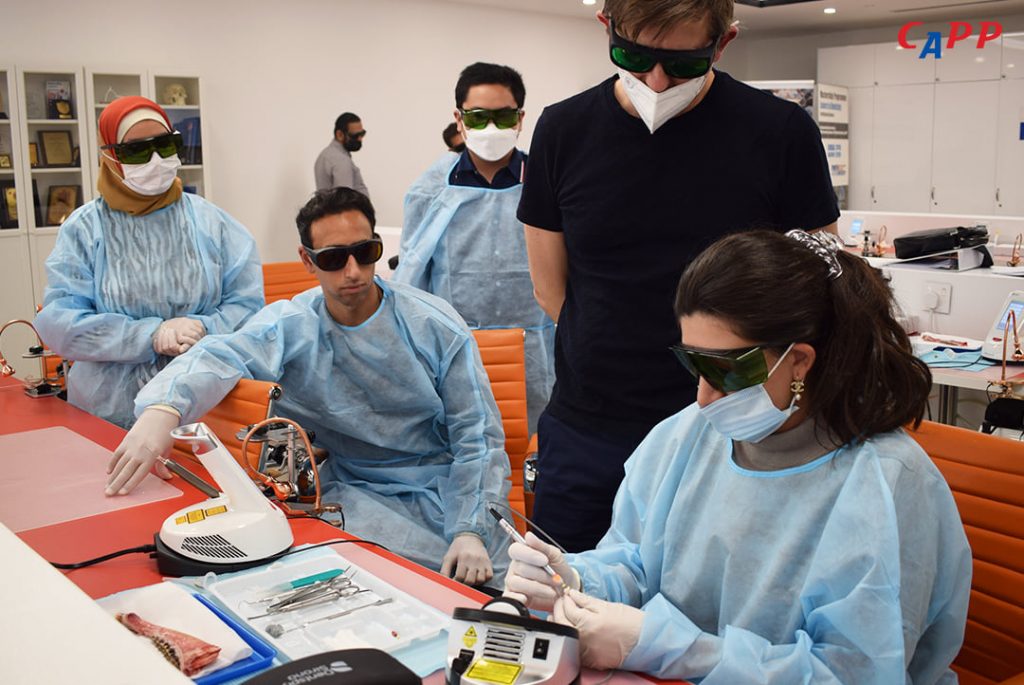
Useful links
Application form
Registration and applying for a seat in the program
Contact Mr. Leon Vanweersch, academic coordinator of AALZ for any request or question concerning AALZ Master or Mastership education. Contact:
WhatsApp +4915150610781
Email: vanweersch@aalz.de or leon.vanweersch@med.sfu.ac.at
Special savings and conditions apply for all AALZ mastership graduates.
